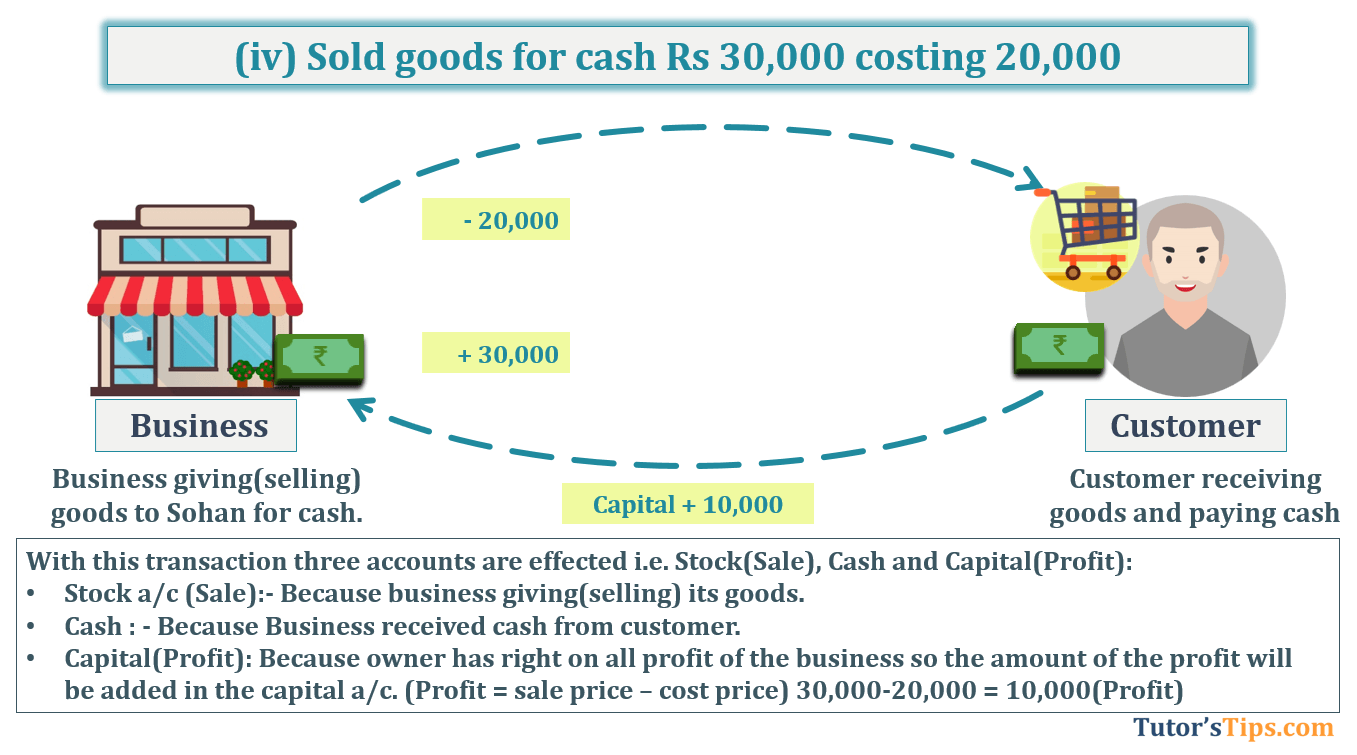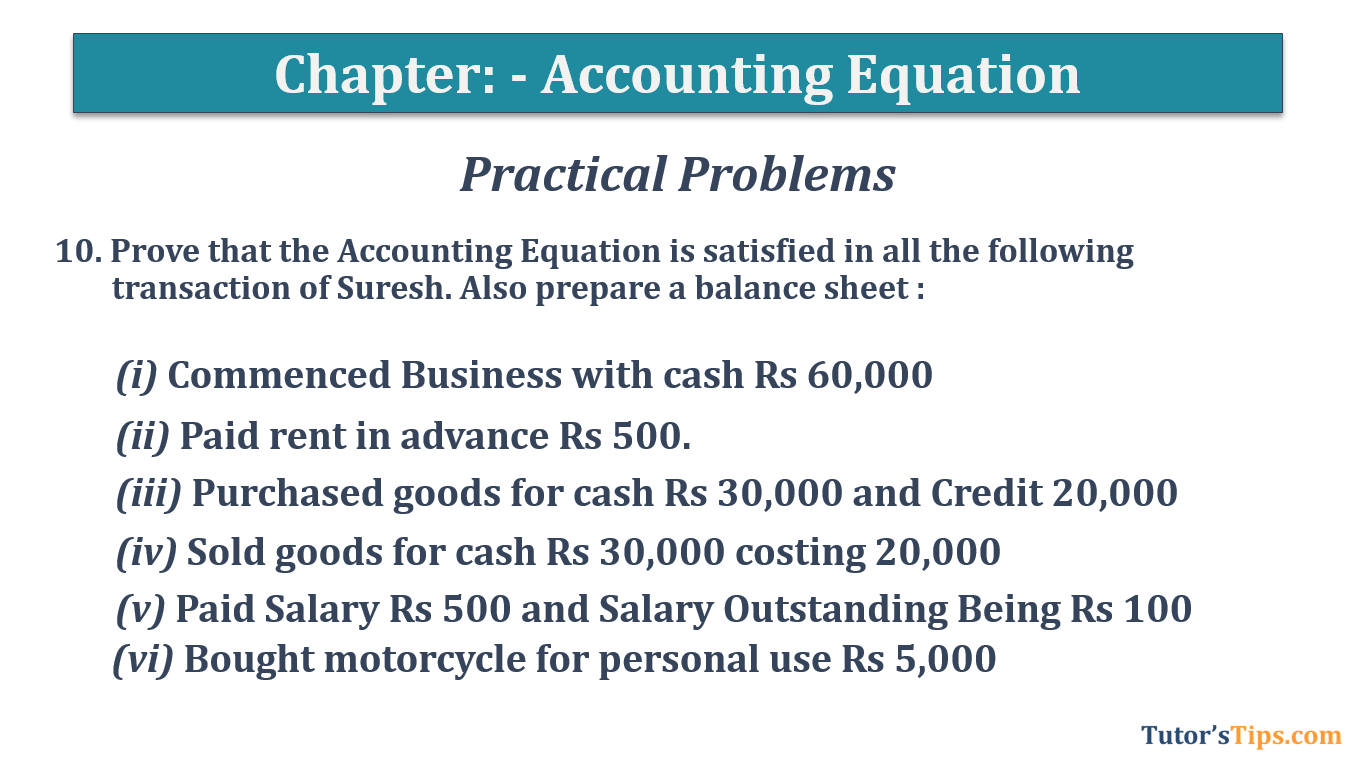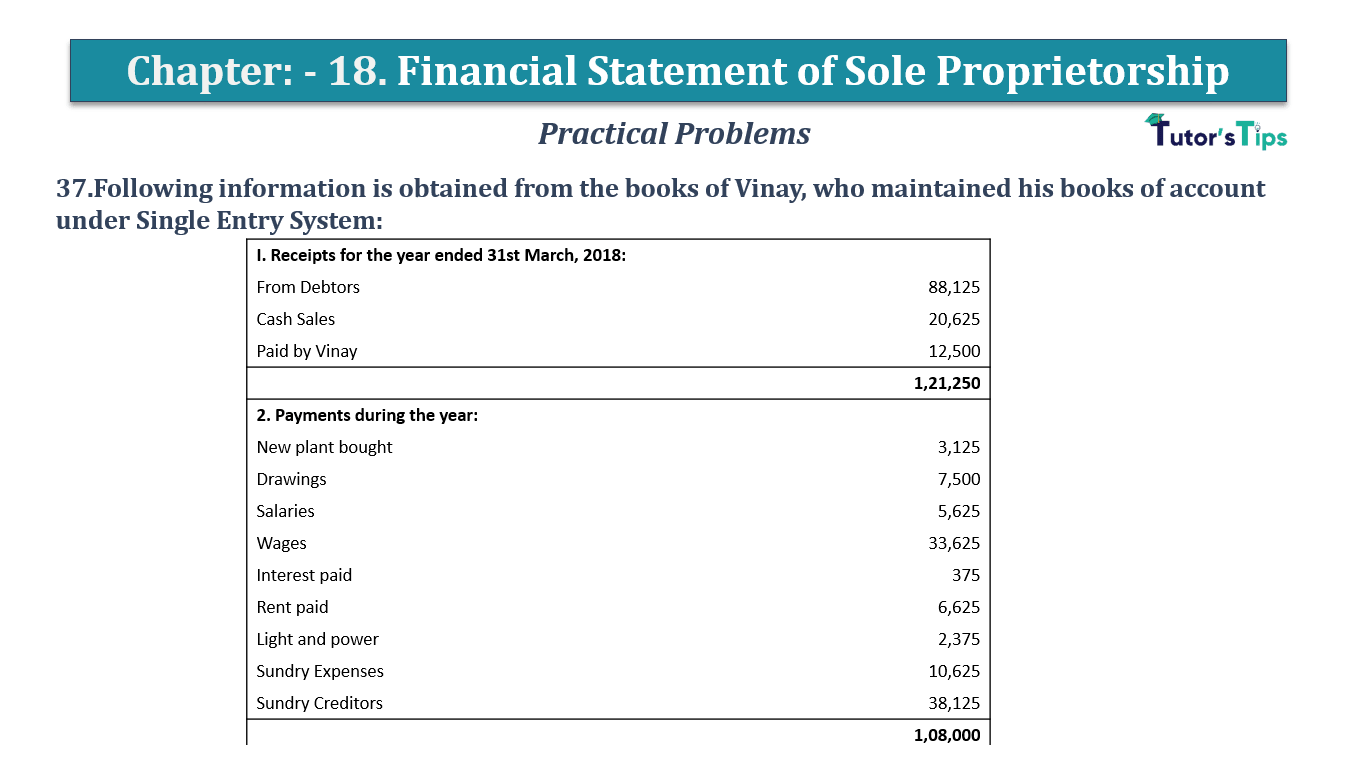Question No 10 Chapter No 5
10. Prove that the Accounting Equation is satisfied in all the following transactions of Suresh. Also prepare a balance sheet :
(i) Commenced Business with cash Rs 60,000
(ii) Paid rent in advance Rs 500.
(iii) Purchased goods for cash Rs 30,000 and Credit 20,000
(v) Paid Salary Rs 500 and Salary Outstanding Being Rs 100
(vi) Bought motorcycle for personal use Rs 5,000
Solution of Question No 10 Chapter No 5: –
Subscribe our Youtube Channel
| S. No. | Particulars | Assets |
Liabilities |
Capital | |||
| Cash | +Prepaid Rent | +Stock | +Creditors | + O/S Salary |
|||
| (i) | Commenced business with cash Rs 60,000 | +60,000 | +60,000 | ||||
| 60,000 | +60,000 | ||||||
| (ii) | Paid rent in advance Rs 500. | -500 | +500 | ||||
| 59,500 | +500 | +60,000 | |||||
| (iii) | Purchased goods for cash Rs 30,000 and Credit 20,000 | -30,000 | +50,000 | +20,000 | |||
| 29,500 | +500 | +50,000 | 20,000 | +60,000 | |||
| (iv) | Paid Salary Rs 500 and Salary Outstanding Being Rs 100 | +30,000 | -20,000 | +10,000 | |||
| 59,500 | +500 | +30,000 | 20,000 | +70,000 | |||
| (v) | Paid Salary Rs 500 and Salary Outstanding Being Rs 100 | -500 | +100 | -600 | |||
| 59,000 | +500 | +30,000 | 20,000 | +100 | 69,400 | ||
| (vi) | Bought motorcycle for personal use Rs 5,000 | -5,000 | -5,000 | ||||
| Total | 54,000 | +500 | +30,000 | 20,000 | +100 | +64,400 | |
Answer: –
Assets = Cash 16,000 + Stock 18,000 + Machine 18,000 = 68,500/-
Liabilities = Nil
Capital = 68,500/-
Liabilities +Capital
0 + 68,500 = 68,500/-
Explanation of All Transactions with images: –
This is not a part of the solution, So you don’t have to write it in the exam. So why we explained if it is not needed. Because This explanation will help you to understand all transactions with logic so don’t need to remember all the transactions but just understand and remember the logic use behind it.
Transaction No. 1

As we discuss in the previous topic, A owner and a business both have a separate identity in the eye of law. So, the business will be treated as an Artificial Person and anything invested by the owner into the business will be treated as capital.
So, In this transaction, as shown in the above image owner investing her cash into the business, this will be treated as capital of the business. The business receiving an asset i.e. cash.
Transaction No. 2

In this transaction, as shown in the above image two accounts are involved i.e. Advance Rent and Cash
Advance Rent a/c: – Business paid rent in advance so to date this expense is not due, so till it becomes due business will treat it as an asset of the business.
Cash a/c:- Business paying cash so it will be deducted.
Transaction No. 3

In this transaction, as shown in the above image three accounts are involved Stock(Purchase), Cash, and Creditors.
Stock a/c (Purchase):- Because business receiving goods.
Cash a/c: – Because business paying some part of the due amount in cash.
Creditor: – Because the Business did not pay some part of the due amount yet, But it has to pay in the future, so that’s why the account of creditors is created.
Transaction No. 4

In this transaction, as shown in the above image three accounts are affected i.e. Stock(Sale), Cash, and Capital(Profit):
Stock a/c (Sale):- Because business giving(selling) its goods.
Cash: – Because Business received cash from the customer.
Capital(Profit): Because the owner has the right to all profit of the business so the amount of the profit will be added in the capital a/c. (Profit = sale price – cost price) 30,000-20,000 = 10,000(Profit)
Advertisement-X
Transaction No. 5

In this transaction, as shown in the above image two accounts are involved i.e. O/S wages and capital
Cash a/s: – Part of the payment is made in cash.
O/s Salary A/c: – Business did not pay some amount of salary yet, but has to pay in, So that’s why it becomes a liability for the business.
Capital a/c:- Business get services from its worker. So these is expenses for the business. “ All expenses and losses are deducted from the amount of capital”
Transaction No. 6

In this transaction, as shown in the above image two accounts are involved i.e.Cash and Capital
Cash a/c: – payment is made in cash.
Capital a/c:- cash withdrawal by the owner
Thanks Please share with your friends
Comment if you have any questions.
T.S. Grewal’s Double Entry Book Keeping (Class +1) – Solution
- Chapter No. 1 – Introduction to Accounting
- Chapter No. 2 – Basic Accounting Terms
- Chapter No. 3 – Theory Base of Accounting, Accounting Standards and International Financial Reporting Standards(IFRS)
- Chapter No. 4 – Bases of Accounting
- Chapter No. 5 – Accounting Equation
- Chapter No. 6 – Accounting Procedures – Rules of Debit and Credit
- Goods and Services Tax(GST)
- Chapter No. 7 – Origin of Transactions – Source Documents and Preparation of Vouchers
- Chapter No. 8 – Journal
- Chapter No. 9 – Ledger
- Chapter No. 10 – Special Purpose Books I – Cash Book
- Chapter No. 11 – Special Purpose Books II – Other Books
- Chapter No. 12 – Bank Reconciliation Statement
- Chapter No. 13 – Trial Balance
- Chapter No. 14 – Depreciation
- Chapter No. 15 – Provisions and Reserves
- Chapter No. 16 – Accounting for Bills of Exchange
- Chapter No. 17 – Rectification of Errors
- Chapter No. 18 – Financial Statements of Sole Proprietorship
- Chapter No. 19 – Adjustments in preparation of Financial Statements
- Chapter No. 20 – Accounts from incomplete Records – Single Entry System
- Chapter No. 21 – Computers in Accounting
- Chapter No. 22 – Accounting Software – Tally
Check out T.S. Grewal’s +1 Book 2019 @ Official Website of Sultan Chand Publication
T.S. Grewal’s Double Entry Book Keeping







1 Comment